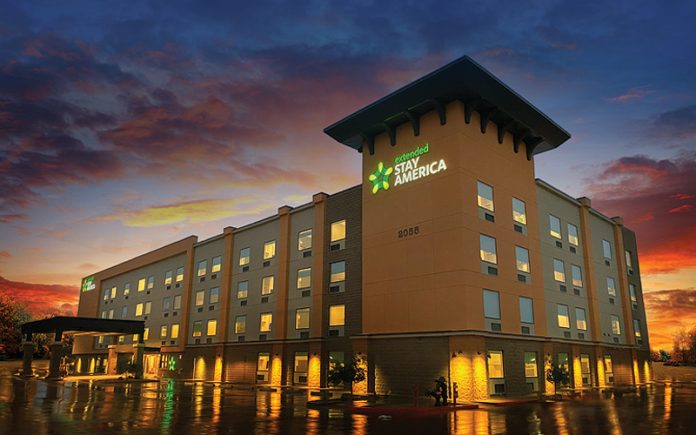
A home away from home. This is what guests have come to expect when they book at an extended stay hotel, whether for a week, a month, six months, or more. This year, more than ever, the mid-priced extended stay hotel segment is providing a haven for essential business travelers, students, frontline healthcare workers, government and military personnel, and families needing housing solutions during transitional life moments.
In fact, one such company—Extended Stay America—is the only major hotel brand to remain 100 percent open since the beginning of the pandemic, hosting upwards of 70,000 guests each night on average.
While the industry average for hotel occupancy lands around 45 percent, Extended Stay America is operating at an impressive 73 percent occupancy rate year to date, indicating a business model poised to weather turbulent times, with the ability to meet the evolving needs of guests seeking flexibility along with comfort and care.
A key factor in Extended Stay America’s recent growth and success lies within its ability to provide guests with a range of accommodation options, affordable prices, and more control over their stays. This is especially evident as people are placing an increased value on health and hygiene, to which Extended Stay America has answered with new measures like STAYconfident, a comprehensive program aimed at the overall wellbeing of its associates and guests with enhanced offerings, cleaning protocols, and more generous discounts to alleviate the financial burden created by COVID-19.
Another key pillar of the Extended Stay America brand is its vast array of amenities that allow for self-sufficiency, including fully equipped kitchens in every room, on-site guest laundry, fast and free in-room WiFi, premium television, and pet-friendly offerings—further underpinning the residence-like environments. And, uniquely, extended stay hotels are not designed to rely upon revenue from banquet and conference business, so the recent halt of such group gatherings has not impacted these properties the way it has for traditional hotel models.
As Extended Stay America continues to evolve, it looks to target other market segments to support the need for short-term housing. Among these focuses are providing off-campus lodging for university students and staff navigating the challenges and uncertainties associated with COVID-19. Already, 23 universities in 10 states across the country have partnered with Extended Stay America. With no binding long-term lease agreements, no security deposits, and no cleaning fees, it presents a stress-free lodging solution nearby campuses.
Extended Stay America is primed to grow its footprint as it presents franchisees an attractive opportunity to join a highly regarded, nationally recognized organization amidst a period of unprecedented growth. Notable selling points include its margins, a streamlined operating model that delivers an optimal balance of services, amenities, and staff, and a simple fee structure.
Further, Extended Stay America opened six new hotels in the first six months after the pandemic began, three more before the end of 2020, and has four in the pipeline for Q1 2021.
Month after month, Extended Stay America is outpacing the industry despite challenging economic conditions and an overall decline in travel demand. The brand projects continued momentum in the months and years to come, all while honoring its mission to provide a safe place at a great value for people who are building a better future for themselves and their families.











